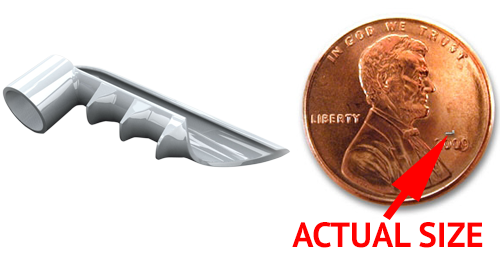iStent® for Glaucoma
Microtechnology advancement for mild to moderate open-angle glaucoma
What is iStent?
iStent is the world’s smallest medical implant designed to treat open-angle glaucoma in a new way by helping to relieve the pressure caused by fluid build-up in the eye. Too much fluid raises pressure and can cause the gradual loss of vision.
How does iStent work?
Like other stents used to prevent heart attacks and strokes, the iStent creates a permanent opening to prevent blockage and improve the eye’s natural drainage. This helps to control pressure in the eye.
How is iStent implanted?
iStent is implanted during cataract surgery. It is so tiny that it is not noticed by the patient. What the patient will notice is that there is no longer a need to put one, two or even three different types of drops in the eye every day.
Drops Dropped
Studies have shown that more than 90% of patients do not comply with their ocular medication dosing regimens and nearly 50% discontinue taking their medications.
How small is the iStent?
It is so small that it appears like a speck to the naked eye, much smaller than the intraocular lens that is implanted during cataract surgery.

Who can get the iStent implant?
This is designed only for patients who have mild to moderate open-angle glaucoma that is being treated with ocular hypotensive medications (eye drops). It is implanted during cataract surgery.
What are the benefits?
This iStent is designed to increase the flow of fluid, limit vision loss and reduce if not totally eliminate the use of glaucoma drops which are an ongoing expense. Implanting during cataract surgery offers you two vision benefits in a single surgery.
Stent Success
In a U.S. clinical study, 68% of glaucoma patients who received iStent remained medication free at 123 months while sustaining a target intraocular pressure of < 21 mm Hg vs. only 50% of patients who underwent cataract surgery alone.
The following Willis Knighton Eye Institute doctors offer this procedure:
Copyright © 2025 Willis Knighton Eye Institute. All rights reserved.










